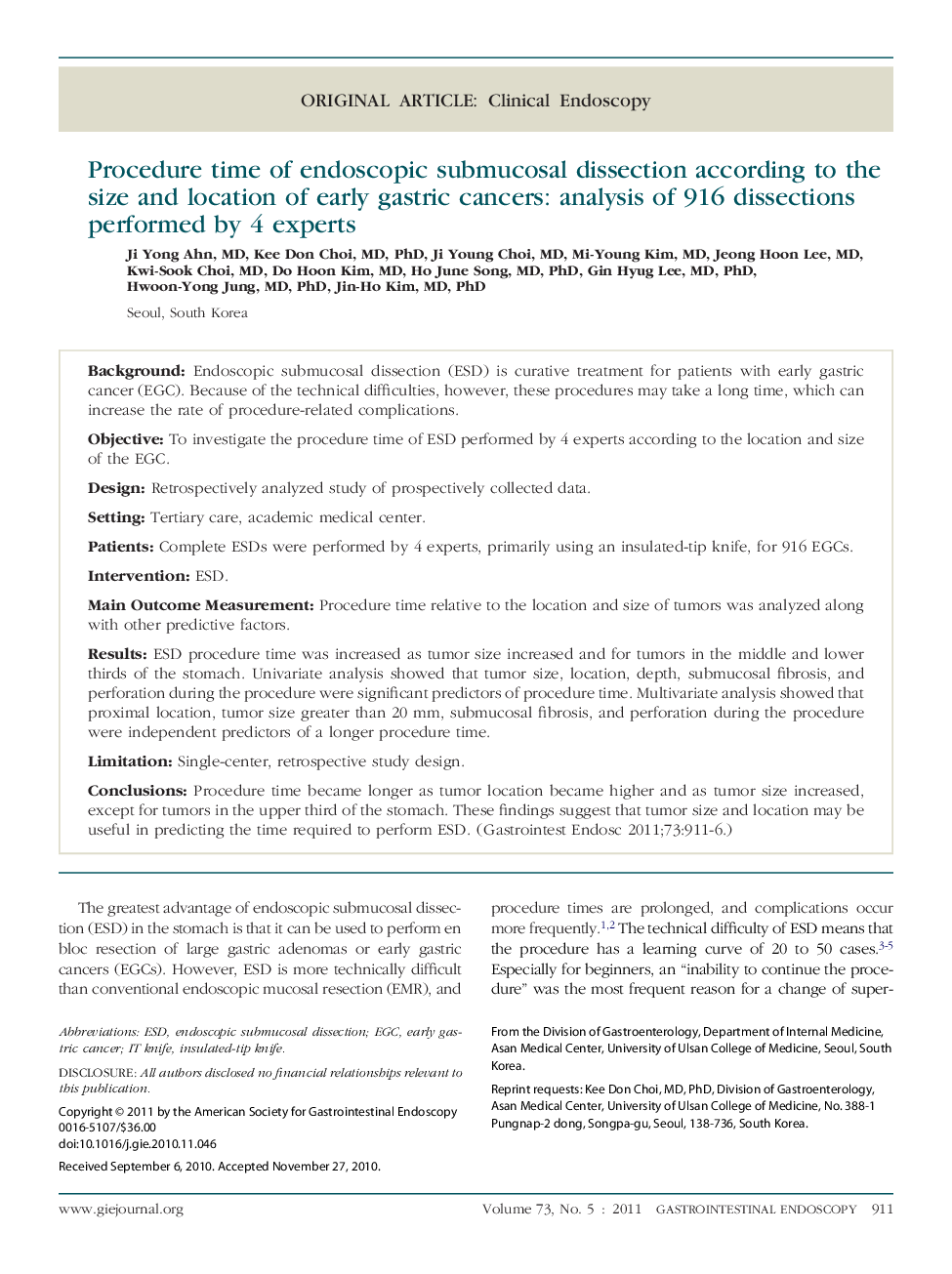| Article ID | Journal | Published Year | Pages | File Type |
|---|---|---|---|---|
| 3305294 | Gastrointestinal Endoscopy | 2011 | 6 Pages |
BackgroundEndoscopic submucosal dissection (ESD) is curative treatment for patients with early gastric cancer (EGC). Because of the technical difficulties, however, these procedures may take a long time, which can increase the rate of procedure-related complications.ObjectiveTo investigate the procedure time of ESD performed by 4 experts according to the location and size of the EGC.DesignRetrospectively analyzed study of prospectively collected data.SettingTertiary care, academic medical center.PatientsComplete ESDs were performed by 4 experts, primarily using an insulated-tip knife, for 916 EGCs.InterventionESD.Main Outcome MeasurementProcedure time relative to the location and size of tumors was analyzed along with other predictive factors.ResultsESD procedure time was increased as tumor size increased and for tumors in the middle and lower thirds of the stomach. Univariate analysis showed that tumor size, location, depth, submucosal fibrosis, and perforation during the procedure were significant predictors of procedure time. Multivariate analysis showed that proximal location, tumor size greater than 20 mm, submucosal fibrosis, and perforation during the procedure were independent predictors of a longer procedure time.LimitationSingle-center, retrospective study design.ConclusionsProcedure time became longer as tumor location became higher and as tumor size increased, except for tumors in the upper third of the stomach. These findings suggest that tumor size and location may be useful in predicting the time required to perform ESD.
